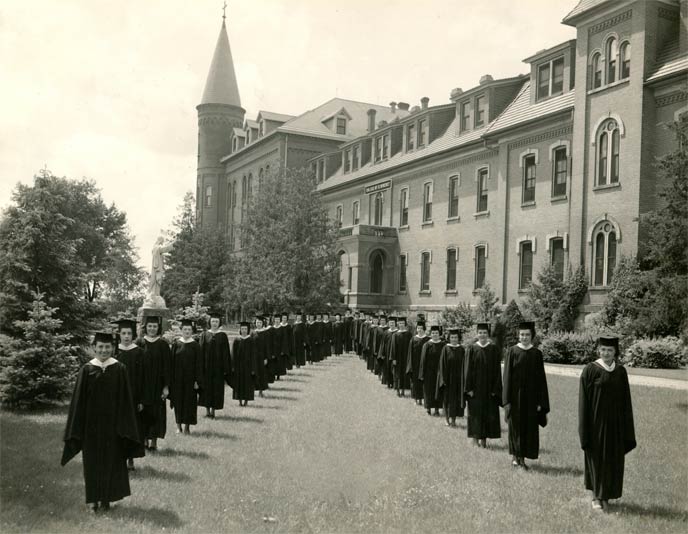 Home
Home
CSB History
The College of Saint Benedict
Its History and Heritage
Founded in 1913, the College of Saint Benedict embraces the rich heritage of bold leadership and pioneering spirit of its Benedictine founders, the Sisters of Saint Benedict’s Monastery. The monastery traces its beginning to 1857, when four young nuns and two monastic candidates made the treacherous journey from Pennsylvania to the Minnesota frontier. Their mission: to establish a Benedictine community in central Minnesota and to serve the area’s German immigrant families.
They survived hunger and the Midwest’s harsh climate to create what became, at its peak, the largest community of Benedictine women in the world, numbering more than 1,200 in 1947.
Their service took many forms. They operated schools, established hospitals and promoted the arts. Through mission work, they extended their reach worldwide, with ministries in Asia, the Caribbean and Latin America.
Upon the shoulders of such women, the College of Saint Benedict stands, its foundation secured by their sacrifice and vision.
The enduring values that sustained the young monastery through trials and achievements are embedded in the college’s character. Foremost among these Benedictine values are community, hospitality and service. The college’s dedication to the power of the liberal arts is a cornerstone of the Benedictine wisdom tradition.
In 1961, the Benedictine community incorporated the college as an independent institution. For the next decade, the working relationship between the monastic community and the college remained virtually unchanged, since most faculty and administrators were sisters. In the 1970s, however, the college experienced significant growth, tripling its enrollment and greatly increasing its lay faculty. During that period of change, the college and monastery forged a strong and lasting relationship based on their shared history and shared values.
Congruent with the college mission to educate women, gender awareness guides the learning experience at the College of Saint Benedict, both in and outside of the classroom. Programming attends to the total individual – mind, body and spirit – and uniquely addresses the lives and aspirations of women.
In recent years, the College of Saint Benedict has gained national recognition for its programming in international education and the fine arts. In addition to its emphasis on gender education, the college also is known for its strengths in environmental studies and service learning. In total, these programs and commitments reflect the college’s Benedictine heritage and its strong commitment to the liberal arts.
Today, the College of Saint Benedict is the nation’s only Benedictine college for women and a 2012 recipient of the prestigious Senator Paul Simon Award for Comprehensive Internationalization. Consistent with its Benedictine heritage, it also is nationally recognized for its promotion of character and values development.
The College of Saint Benedict recognizes that its greatest strength, like that of its founders, lies in the relationships formed among all members of a welcoming campus community – students, faculty, staff and alumnae. Those connections take shape in myriad experiences, yet they share commitments to standards of excellence, an engagement with the world and the common good.
